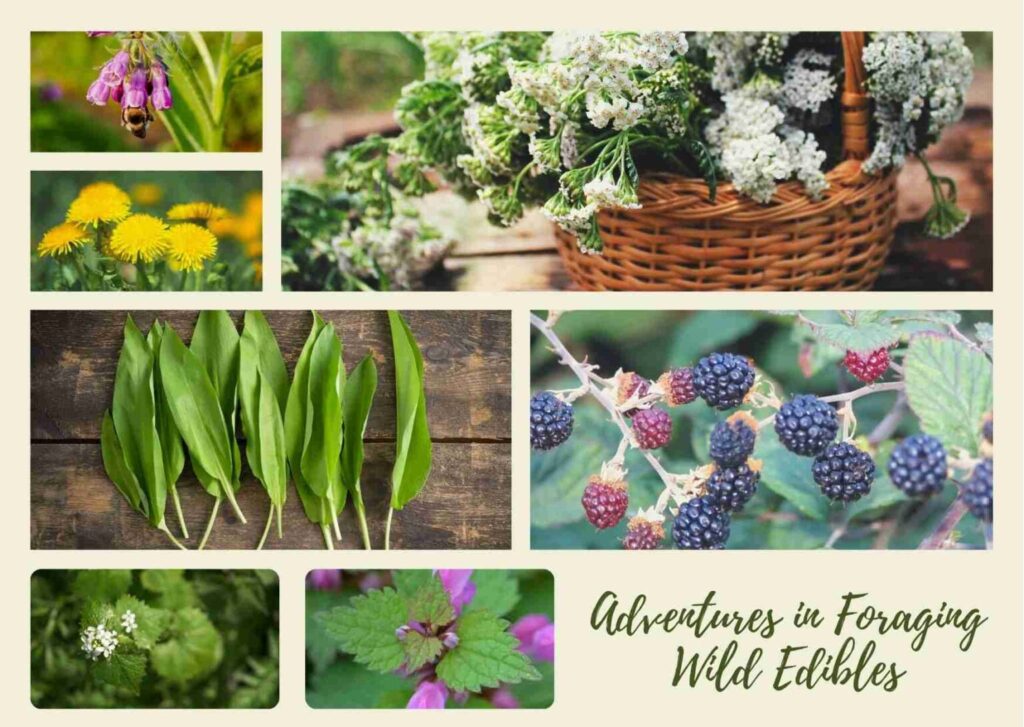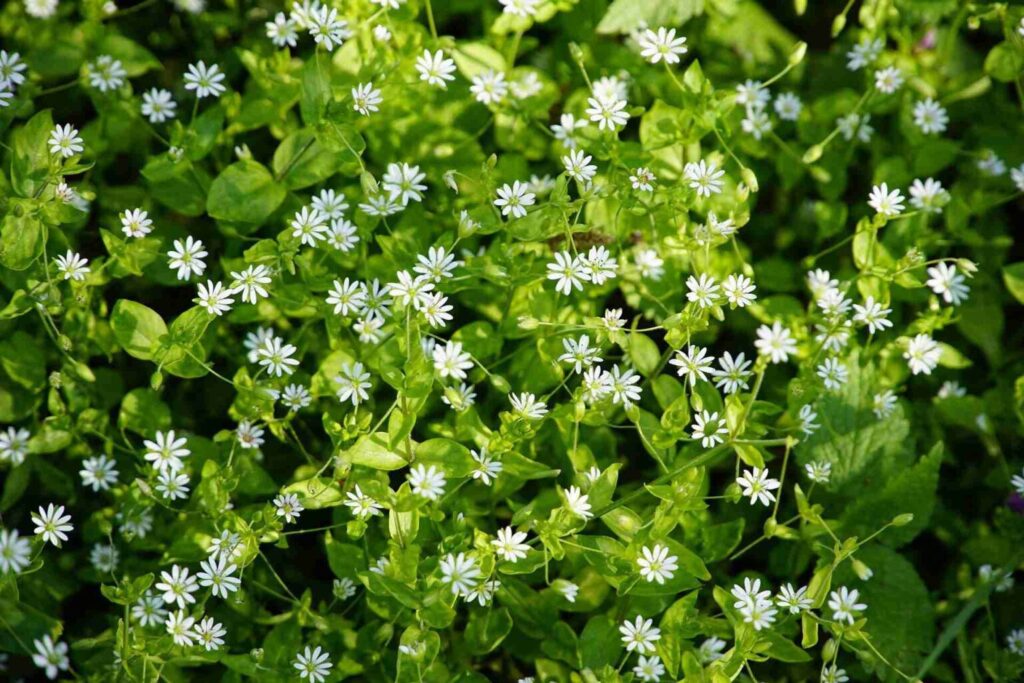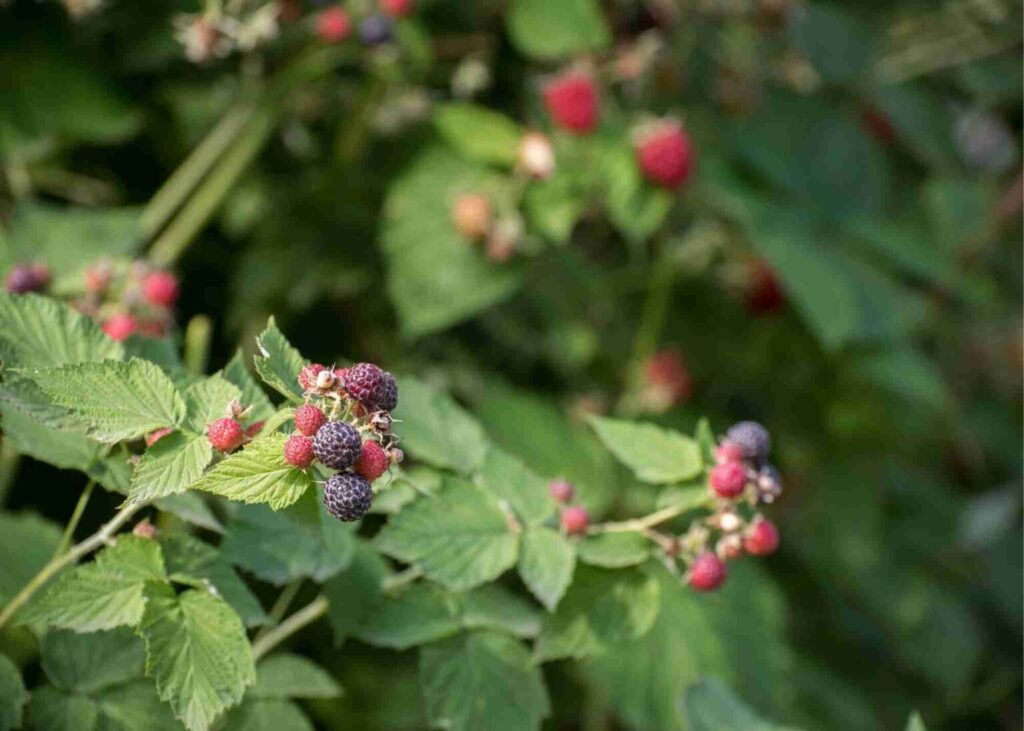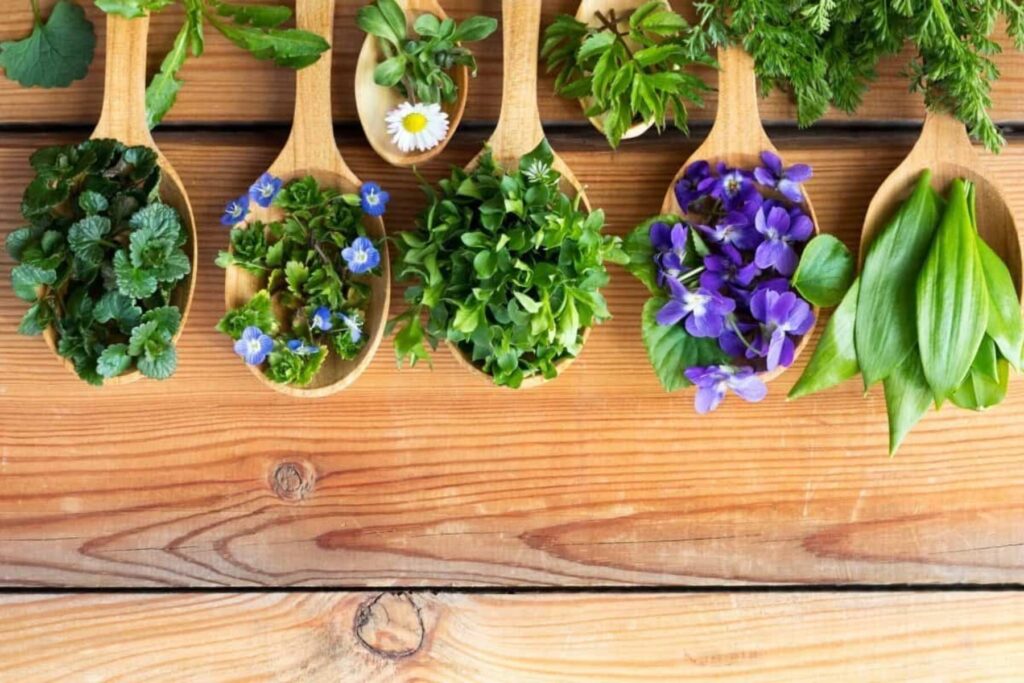
Our ancient ancestors seemed to know the healing properties of these foods and truly lived the “food is medicine” lifestyle without putting a name to it. To them, it was simply what you did for nourishment, healing, and survival.
Today, many herbalists know that ancestral eating contributes significantly to our overall health and wellbeing and believe that the food we consume IS medicine. What could be better for you than to eat as locally as possible from foods that grow wild in that environment?
What Exactly is Ancestral Eating?
To be clear, the motivation behind ancestral eating isn’t to mimic exactly what our ancestors ate. It’s to eat what they would’ve had reasonable access to. It’s about avoiding modern, processed, industrialized foods. Ancestral eating is more about what you don’t eat than what you do, and is centered around eating real food, or food that is as close to its natural state as possible. Ancestral food doesn’t have ingredients – it is the ingredients!
- Find the basket/receptacle to put foraged things in
- Look at a map
- Decide where to go
- Check the weather
- Decide what to wear
- Find your socks
- Find your shoes
- Find your knife/other cutting implements you might need
- Find the plant/tree/mushroom ID guide
- Get to where you’re going
- Look at a leaf/berry/mushroom
- Check what it is in a book/app
- Double check that you have identified it correctly
- Triple check that you have definitely identified it correctly
- Find out if its something you can eat/feel like eating
- Pick a leaf or two/decide not to pick them
- decide which way to go next
- walk that way
- Ancestral eating is simply eating unrefined, unprocessed, whole foods that have been around for thousands and thousands of years. This includes:
- Grass-fed, Wild Animals: The untamed flavors of game and grass-fed meats, reminiscent of a time when our ancestors relied on hunting for sustenance.
- Wild Seafood: A direct connection to our ancestral seafaring roots, replete with the flavors of the ocean.
- Pastured Chicken and Eggs: A return to the natural habitat of these poultry, where they forage and graze as nature intended.
- Organic Fruits and Vegetables: Wholesome produce that reflects the bounty of the land, cultivated with respect for the soil and environment.
- Wild Edible Plants: Nature’s hidden gems, often overlooked in modern diets, yet cherished by our ancestors for their nutritional richness.
- Healthy, Traditional Fats: Time-honored fats like olive oil, avocado oil, coconut oil, lard, and butter, preserving the essence of culinary tradition.
- Grass-fed, Full-fat Raw Dairy: A source of essential nutrients, bearing witness to the enduring relationship between humans and livestock.
- Fermented Foods: A nod to the preservation techniques of our ancestors, offering both nutrition and flavor.
- Wild Edibles: A category that spans from dandelions to chickweed, these treasures once adorned our grandparents’ tables, their culinary and medicinal significance often forgotten or dismissed.
Exploring the nutritional and health benefits of wild and foraged foods, from boosting immunity to enhancing flavor, this article unveils why you should consider these foods in your diet.
Introduction: The Rebirth of Wild and Foraged Foods

In a world where processed and store-bought foods dominate the modern diet, wild and foraged foods are increasingly seen as an ancient, yet revitalizing, alternative. The art of foraging, once passed down through generations, is experiencing a revival as people look to reconnect with nature and rediscover nutrient-dense foods that come directly from the earth. Wild foods, unlike their farmed counterparts, often possess a higher concentration of nutrients, including vitamins, minerals, and antioxidants.
This article explores the science behind wild foods, how they benefit health, and why you should consider foraging as part of your wellness routine.
What Are Wild and Foraged Foods?
Understanding the Basics
Wild and foraged foods are plants, fungi, and sometimes animals that grow naturally in the wild, untouched by cultivation, pesticides, or fertilizers. These foods have adapted to thrive in their natural environments, often making them more resilient and nutritionally robust than their domesticated counterparts. Wild greens like dandelion, stinging nettles, and wild garlic, for example, are packed with micronutrients. Foraging involves searching for these foods in their natural habitats, from forests to fields, and collecting them for personal consumption.
Nutritional Powerhouses: Why Wild Foods Are Healthier
Packed with Nutrients
Wild foods are often more nutrient-dense than farmed varieties. Since they grow in their natural environment, they are more likely to accumulate the vitamins and minerals that our bodies need. For instance, wild herbs and greens such as lamb’s quarters, chickweed, and purslane are rich in vitamins A, C, and K, as well as iron and calcium. Unlike farmed produce, which may lose some of its nutrients during the growing and harvesting process, wild foods are typically packed with nutrients right from the source.
Higher Antioxidant Levels
Many wild foods are also rich in antioxidants. Antioxidants help fight oxidative stress in the body, reducing inflammation and the risk of chronic diseases like heart disease and cancer. For example, wild blueberries contain higher levels of antioxidants than cultivated blueberries. Antioxidants in wild plants are more potent because they help the plants survive in less-than-ideal environmental conditions.
The Role of Wild Foods in Immunity
Boosting Your Immune System
Eating a diet rich in wild foods can support a stronger immune system. Many wild plants, like elderberries and echinacea, have been used for centuries to treat colds and infections. These plants contain bioactive compounds that help stimulate immune system responses. Wild mushrooms, such as maitake and shiitake, have also been linked to improved immune function due to their polysaccharide content. Incorporating these foods into your diet can help provide the body with the tools it needs to fend off illness naturally.
How Foraged Foods Impact Gut Health
Promoting Healthy Digestion
The diversity of wild plants offers a unique benefit to gut health. Many wild foods, like dandelion greens and burdock root, contain prebiotic fibers that nourish the good bacteria in your gut. A healthy microbiome is essential for digestion, nutrient absorption, and overall immunity. Wild foods also tend to have a variety of phytochemicals that may help regulate digestion and reduce inflammation in the gut. These foods help balance your gut microbiota, improve digestion, and reduce issues like bloating or constipation.
The Impact of Wild Foods on Mental Health
Reducing Stress and Improving Mood
Eating wild foods can have a positive effect on mental health by reducing stress and improving mood. Certain wild herbs, such as ashwagandha and lemon balm, have adaptogenic properties that help the body cope with stress. These plants have been shown to reduce cortisol levels, which can help alleviate anxiety and depression. Wild foods may also help balance the body’s production of neurotransmitters like serotonin, which regulate mood and feelings of well-being.
Foraging: How to Safely Collect Wild Foods
Getting Started with Foraging

Foraging can be a fun and rewarding activity, but it’s important to do so safely. There are many guides and resources available for beginner foragers that can help you identify edible plants. It’s crucial to properly identify any wild food before consumption to avoid toxic look-alikes. In addition, always forage from areas that are free from pesticides, pollution, or other contaminants. Some of the most common foraged foods include wild herbs, mushrooms, and berries. Starting with easy-to-identify plants like dandelions or wild garlic is a good way to begin.
Foraging Ethics: Sustainable Harvesting
Foraging sustainably means taking only what you need and leaving enough for the plants to continue growing and reproducing. Ethical foraging ensures that wild foods are preserved for future generations, allowing ecosystems to thrive. Always ensure that you are aware of local regulations regarding foraging, as certain species may be protected.
The Flavor of Wild Foods: Taste the Difference
How Wild Foods Enhance Your Diet
One of the most exciting benefits of eating wild foods is their unique and intense flavors. Wild berries, herbs, and greens often taste more vibrant than their cultivated counterparts. Wild foods also bring a variety of textures and flavors to the table. For example, wild garlic is more pungent and flavorful than domesticated garlic, while wild mushrooms offer a deeper earthier taste. This boldness in flavor can transform your meals and make them more exciting.
Wild Foods in Modern Cuisine
How Chefs Are Incorporating Wild Foods
Wild and foraged foods are no longer just a niche interest for survivalists and health enthusiasts; they are making their way into mainstream cuisine. Chefs around the world are incorporating wild plants and herbs into their dishes to create bold, unique flavors. These ingredients are becoming staples in farm-to-table restaurants and can elevate the quality and nutrition of any dish. The use of foraged ingredients not only enhances flavor but also supports sustainability by reducing reliance on mass-produced foods.
The Environmental Benefits of Foraging
Reducing the Carbon Footprint
Foraging can have a positive environmental impact by reducing the need for agriculture, which often involves large amounts of water, pesticides, and energy. Wild foods grow naturally without the need for human intervention, making them a low-carbon food source. Additionally, by foraging for wild foods, people can reduce their reliance on packaged and processed products that contribute to plastic waste. Foraging, when done sustainably, can be a more environmentally friendly way to gather food.
Potential Risks of Eating Wild Foods

Toxic Plants and Mushrooms
Despite their many benefits, wild foods can also pose risks. Some wild plants and mushrooms are toxic, and consuming them can lead to serious illness or even death. It’s crucial to properly identify and research wild foods before eating them. Additionally, people who are allergic to certain foods may experience reactions to wild foods that are not present in their cultivated counterparts. Always start with small amounts of new wild foods to ensure there are no adverse effects.
Exploring More Wild Foods for Your Diet
Unique Wild Greens and Herbs
Beyond the common foraged foods like dandelions, wild garlic, and nettles, there’s a wide variety of wild greens and herbs that offer unique flavors and a wealth of health benefits. Take, for example, wild mustard greens. These leafy plants are often found in fields or along roadsides and are packed with vitamins A, C, and K. Wild mustard also has a sharp, peppery taste, making it a great addition to salads or sandwiches.
Another popular wild green is lamb’s quarters, which is often described as a wild spinach. This plant is rich in iron, calcium, and magnesium, offering a great alternative to cultivated greens. Its slightly earthy flavor pairs well with cooked dishes or can be used in pesto.
Caution: Identification is Key
It’s important to emphasize that while wild greens and herbs are nutrient-dense, proper identification is crucial. Many edible wild plants look similar to poisonous ones, making it essential for for foragers to learn from reputable sources or experienced foragers.
The Potential of Wild Mushrooms
A World of Edible Fungi

Wild mushrooms are a treasure trove of culinary delights and are increasingly gaining popularity in the food world for their rich umami flavor and health benefits. Varieties like morel, chanterelle, and porcini are prized for their ability to elevate a dish. Wild mushrooms contain antioxidants, vitamins (such as D and B), and essential amino acids that contribute to a well-rounded diet.
Foraging for mushrooms can be more challenging than foraging for plants, but it’s a rewarding experience once you know what you’re looking for. Morel mushrooms, for example, are highly sought after for their meaty texture and are known to promote immune function due to their high content of polysaccharides, which activate immune cells.
Wild Fruits: The Bounty of the Forest
Foraging for Wild Berries and Fruits
In addition to wild greens and mushrooms, forests, fields, and even urban spaces can provide an array of wild fruits that offer diverse flavors and impressive nutritional benefits. Wild blueberries are a great example. Known for their high antioxidant levels, wild blueberries are smaller but packed with more antioxidants than cultivated varieties, making them a powerhouse in supporting cellular health and protecting the body from oxidative stress. Wild strawberries, raspberries, and blackberries are also commonly foraged and bring a sweet, juicy addition to the diet. These fruits not only provide essential vitamins, but their high fiber content also aids in digestion, helping to balance blood sugar levels and promote a healthy gut.
The Psychological Benefits of Foraging
A Connection to Nature
Foraging isn’t just about the food; it’s about the connection with nature. Engaging in the practice of foraging can have significant psychological benefits. Spending time outdoors and connecting with nature has been linked to lower levels of stress, anxiety, and depression. When we forage, we slow down, focus on the task at hand, and experience a deep sense of mindfulness and grounding.
Studies have shown that spending time in natural environments, such as forests and fields, can improve mood, reduce mental fatigue, and enhance overall mental well-being. Foraging encourages people to be present and embrace the natural rhythms of the earth, which is especially important in today’s fast-paced world.
Sustainable Foraging Practices for the Future
Protecting the Wild Foods We Love
Foraging can be an incredibly sustainable and eco-friendly practice when done ethically. However, foragers must be mindful of the impact they have on wild food ecosystems. Sustainable foraging practices are essential to ensure that the plants and fungi remain abundant for future generations. Some key guidelines include:
a) Harvesting with Care: Only take what you need and leave enough for the plant or mushroom to regenerate.
b) Avoid Overharvesting: Some species are vulnerable to overharvesting, so make sure to leave enough of the wild food to grow and spread.
c) Learn Local Regulations: In some areas, foraging is restricted or regulated to protect ecosystems. Always be sure to check local rules and guidelines before foraging.
d) Respect the Land: Avoid damaging the habitat of the plants or fungi you’re harvesting. Stay on designated paths and avoid disturbing wildlife.
Wild and Foraged Foods: A Sustainable Solution for Modern Nutrition
How Wild Foods Help Combat Food Waste
Wild foods offer a sustainable, eco-friendly alternative to the heavily processed, mass-produced foods commonly found in supermarkets. By foraging and consuming wild foods, we help reduce our reliance on commercial agriculture, which is often associated with monocropping, water usage, and pesticide use. Additionally, by utilizing wild foods, we reduce food waste, as these foods grow in abundance, often without human intervention.
Foraging is a way to tap into nature’s natural abundance, consuming foods that are perfectly suited to their environment and contribute to biodiversity. It also promotes a more sustainable lifestyle by reducing the carbon footprint associated with transporting and packaging foods from distant locations.
How to Integrate Wild Foods into Your Diet
Making Wild Foods a Part of Your Meals
Incorporating wild foods into your daily diet is simple once you’ve learned to identify and harvest them safely. One of the easiest ways to begin is by adding foraged greens to your salads. For example, dandelion greens can be combined with other fresh vegetables to create a nutritious, fiber-rich base.
You can also include wild herbs like mint, oregano, and thyme to enhance the flavor of soups, sauces, or teas. Wild berries can be mixed into smoothies or eaten as a topping for oatmeal. Foraged mushrooms can be sautéed and added to pastas or used in stir-fries. The possibilities are endless once you start incorporating these unique, nutrient-dense foods into your meals.
Wild Foods and Their Medicinal Benefits
Using Wild Foods for Healing
Many wild foods also have medicinal properties that can support health and aid in the treatment of various ailments. For instance, the roots of wild ginger and turmeric contain potent anti-inflammatory compounds, which are often used in traditional medicine for pain relief and digestive support. Echinacea, another wild plant, is known for its immune-boosting properties and is often used to prevent colds.
Wild herbs like peppermint and chamomile are used for their soothing properties, helping to alleviate digestive issues like bloating and indigestion. By incorporating these plants into teas, tinctures, or even as culinary spices, you can unlock their therapeutic benefits.
The Future of Foraging: From Survival to Culinary Trend
Foraging for a Healthier Future
As more people become aware of the nutritional and environmental benefits of wild foods, foraging is moving from a niche practice to a mainstream culinary trend. Chefs, nutritionists, and health-conscious individuals are increasingly turning to wild ingredients to enhance their meals and improve their well-being. This trend is fostering a deeper connection to food sources and encouraging people to be more mindful of where their food comes from.
The future of foraging may hold even more exciting discoveries as we continue to explore the hidden treasures of the natural world. Whether for health, flavor, or environmental sustainability, eating wild and foraged foods provides a unique way to nourish the body and soul.
Conclusion: The Secret Benefits of Eating Wild and Foraged Foods
Eating wild and foraged foods offers a multitude of health and environmental benefits. These nutrient-dense foods not only provide vitamins, minerals, and antioxidants that promote optimal health, but they also support biodiversity, reduce food waste, and encourage sustainability. Whether it’s wild greens, mushrooms, berries, or herbs, foraging presents an opportunity to reconnect with nature, enhance your diet, and explore the rich flavors and medicinal properties of the natural world.
As the foraging movement grows in popularity, it’s essential to approach it with mindfulness and responsibility. Foragers must be educated about plant and mushroom identification to avoid harmful species, and ethical practices should be followed to ensure the long-term viability of wild food sources. By learning more about these incredible foods and integrating them into your diet, you can enjoy the health benefits they offer while also fostering a deeper connection to the environment.
The appeal of foraged foods lies in their ability to provide nourishing, delicious, and sustainable meals. By expanding our awareness and embracing these wild foods, we can contribute to a healthier and more sustainable future, one meal at a time.
Q&A:
1. What are the benefits of eating wild foods?
Eating wild foods can improve your diet by offering nutrient-rich options, including high levels of antioxidants, vitamins, and minerals. They also support biodiversity, promote sustainability, and encourage a closer connection to nature.
2. How do wild foods compare to store-bought foods?
Wild foods typically have higher concentrations of nutrients compared to store-bought produce. Wild varieties, such as wild berries and greens, contain more antioxidants and vitamins, and they are often grown without pesticides.
3. Is foraging safe?
Foraging can be safe when proper identification and ethical practices are followed. It’s essential to learn from experienced foragers, use reputable guides, and make sure you’re not harvesting endangered species.
4. What are some common wild edibles I can forage?
Common wild edibles include dandelion greens, wild garlic, nettles, wild mustard, mushrooms like morels and chanterelles, and various wild berries like blackberries, raspberries, and blueberries.
5. How do wild mushrooms contribute to health?
Wild mushrooms are rich in antioxidants, vitamins (such as D and B), and essential amino acids. They support immune function, promote cognitive health, and can lower the risk of chronic diseases.
6. Can foraged wild foods be used for medicinal purposes?
Yes, many wild foods have medicinal properties. For example, Echinacea is known for boosting the immune system, while wild ginger and turmeric have anti-inflammatory benefits.
7. What’s the role of wild fruits in a balanced diet?
Wild fruits like wild berries and apples are packed with vitamins and fiber, supporting digestion, boosting immunity, and helping to control blood sugar. They are a great addition to a nutrient-rich diet.
How do foraged foods help with food sustainability?
Foraging reduces reliance on mass agriculture and commercial food production. By consuming wild foods, we help minimize food waste, avoid packaging, and reduce the carbon footprint of the foods we consume.
9. Are wild foods safer than conventionally grown foods?
Wild foods are often free from pesticides and chemicals, making them safer in that regard. However, it’s important to properly identify them and avoid harmful plants or mushrooms.
10. What precautions should be taken while foraging?
Foragers should educate themselves on proper plant and mushroom identification, avoid harvesting endangered species, and follow sustainable practices to ensure that they don’t deplete wild food sources.
11. How does foraging improve mental well-being?
Spending time in nature and practicing mindfulness while foraging can reduce stress, enhance mood, and improve mental clarity. Foraging fosters a connection to nature, which has been shown to reduce anxiety and depression.
12. How can foraged foods support gut health?
Many wild foods are high in fiber, prebiotics, and antioxidants, which support gut health by promoting healthy digestion and improving the balance of gut bacteria. Wild mushrooms, in particular, are excellent for gut health.
13. Are wild foods accessible to everyone?
Wild foods can be found in a variety of environments, including forests, fields, and even urban spaces. However, accessibility depends on your location and the season. It’s important to learn what is available in your area.
14. Can wild foods be toxic?
Yes, some wild foods are toxic and dangerous to eat. Proper identification is crucial when foraging to avoid ingesting poisonous plants or mushrooms. Always be sure to consult reliable guides or experts.
15. How do foraged greens compare to cultivated greens?
Foraged greens like dandelion leaves and nettles are often richer in nutrients compared to their cultivated counterparts. They are higher in vitamins, minerals, and antioxidants and are grown without synthetic fertilizers or pesticides.
16. What are some ways to incorporate wild foods into meals?
Wild foods can be added to salads, soups, stews, smoothies, or used as garnishes. Foraged herbs and greens can enhance the flavor of dishes, while wild fruits can be used in desserts or preserves.
17. How can foraged mushrooms be prepared?
Wild mushrooms can be sautéed, grilled, or added to soups and stews. Morel mushrooms are especially popular when breaded and fried, while chanterelles add depth of flavor to pasta dishes.
18. Are there health risks when foraging for mushrooms?
Yes, certain wild mushrooms are toxic and can cause severe illness or even death. It’s essential to properly identify edible mushrooms, and if unsure, always consult an expert or avoid consuming them.
19. Can foraging be done year-round?
Foraging varies by season, with different wild foods available at different times of the year. In the spring and summer, foraged greens, fruits, and herbs are common, while autumn and winter offer mushrooms and roots.
20. How does foraging help with food insecurity?
Foraging can help supplement diets and reduce food insecurity, particularly in areas where access to fresh produce may be limited. It’s a sustainable, cost-effective way to gather nutritious foods directly from nature.